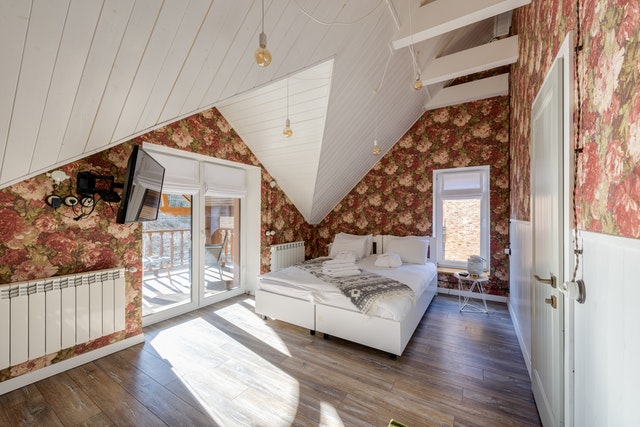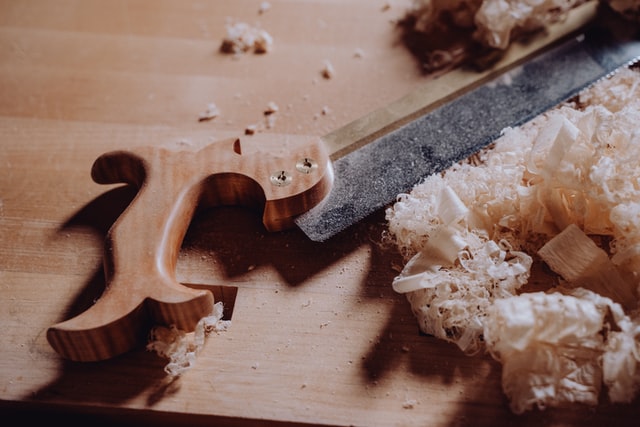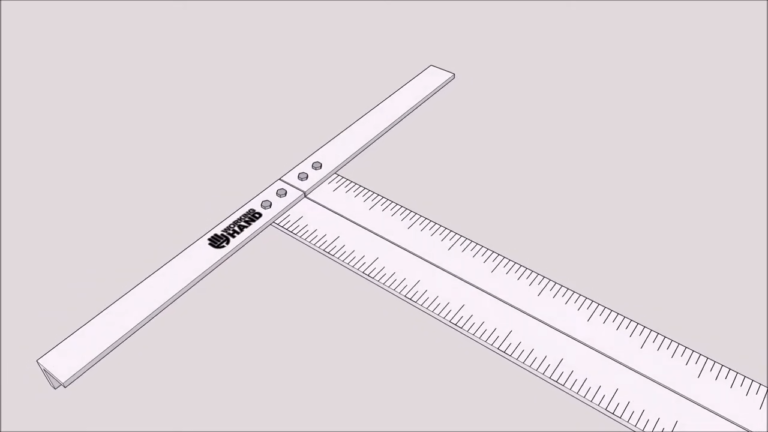
This is an excerpt from the Book called “Home Improvement” by Des Moines, Lowa . Continue reading to learn more about wallpaper installation guidence, thanks to the author.
Wallpapering The Wall
Before beginning to paper, be sure that you have already done all of the preparation work needed to ensure a good finished job. To prepare, you’ll need to wash, patch, prime, seal, and size paper won’t stick to a greasy surface and underlying irregularities in the wall may remain visible beneath the paper.
Try to avoid the common temptation to paper above all the doors and windows first. And never cut all of the lengths at one time. In the first case, you’ll see differences in the color if the rolls vary even slightly. In the second, if you make a mistake in cutting, there’s no sense in multiplying it. Work around the room.
- The pattern of your paper determines how strips are cut and glued on the wall. On straight-match and random-match papers, patterns along the left and right edges of the paper are the same, and installation is straightforward with minimal waste. On drop-match papers, such as the one above the elements are staggered along both edges. Aligning the pattern results in an uneven top edge, this is trimmed off. This takes more time and wastes some paper, but complex patterns are usually more interesting. Cutting alternating strips from two rolls of wallpaper cuts down on some of the waste, but don’t get too far ahead of yourself. If you do cut a couple of strips ahead, number the places.
- Begin at an inconspicuous inside corner of the room. Plan to position the first strip so that all but about 1 to 2 inches of paper is on the first wall to be papered the narrow part wraps around the corner onto the adjoining wall hiding potential comer cracks. To lay out the strip measure from the corner by the width of the paper minus the wrap gulded by a level snap a plumbing at this point.
- Cut the first strip of paper about 4 inches longer than needed so it can temporarily overlap the ceiling or crown molding and baseboard roll out ;the paper on a long work surface and cut the strip to length using scissors with ling blades.
- Apply an activator or the recommended paste, even if you are using a prepasted paper brush or roll on the activator or paste following the instructions.
- Gently fold the ends toward the middle, glued sides together with the patterned sides out—this is called booking the strip. Try not to crease the paper. Wait several minutes before hanging, so moisture soaks in to relax the paper and the paste has a chance to activate. If you’re interrupted, cover the booked paper with plastic so the paste stays wet.
- Position the first strip along the plumb line with a gentle but firm hand. Starting at the middle of the strip, work your way up to the top, sliding the paper to align it. Align the bottom and work it gently against the wall. go back to the top and smooth—but don’t stretch—the paper onto the wall with a brush or a flexible plastic smoother. Coax any bubbles out to the edges.
- Hang the second strip and then trim the first. Allow the paste to dry on the first strip while you hand the second strip, and then go back to trim the first, trim as shown placing a broad knife between the paper and the cutting knife to guide the cut. a plastic smoother can also be used as a straightedge. You can also use a single-edge razor blade to make clean cuts, changing to a new blade often.
- Butt, but don’t overlap, subsequent strips. After you’ve hung a few strips, go over the seams with a seams roller to press the edges in place. (Don’t press too hard—you’ll force too much paste out and the seams will loosen.) Sponge off excess paste with clean, warm water. Note: fails and flocked or embossed papers may be damaged by rolling; instead, smooth the seams with a smoothing brush.
- Paper right over electric switches and outlets after the cover plate has been removed. Cut away excess paper later. Before cutting around an electrical box, shut off the power to the room cut an x across the box with scissors, working toward the corners (avoid cutting into the outlet or switch). Trim with a blade to make a rectangular opening, leaving enough paper for the cover plate to conceal the edges.

Wallpapering Inside Corners
1.Measure in three places:
Form the edge of the previous strip to the corner at the top, middle, and bottom of the corner. These steps are designed to eliminate sloping paper caused by out-of-plumb corners (which, unfortunately, most are).
2. Align the edges of the booked strip.
Add 12 to 1 inch to the widest distance measured in step 1 mark that measurement at both folds and several spots along the pasted, booked strip, hold a straight edge against the marks, guiding a utility knife against it to cut the strip to width. Save the pasted cutoff, keeping it moist.
3.Position the strip on the wall,
Butting the edges and matching the pattern on the previous strip. let any extra width go around the corner onto the next wall.
4 .Gently smooth the paper
Onto the walls and into the corner with your hands (make sure they’re clean and free of paste).
5.Make slits from the corner to the edge of the paper
At the top and bottom of the strip so that you can wrap the overlap around the corner without any wrinkles.
6.Flatten the strip with a smoothing tool,
Pressing firmly but not so hard that you square the paste out. Trim excess paper of the ceiling and baseboard.
7 .Measure The Width Of The Cutoff From Step2.
Measure this distance from the corner onto the unpapered wall and make a pencil mark. Guided by a level (or laser level) draw or pop a plumb line through this mark from ceiling to floor.
8.Hang The Cutoff On The Wall,
With the cut edge toward the corner and the factory edge against the plumb line. Align the pattern, overlapping the two pieces as necessary. Smooth the strip with a smoothing brush. Trim at the ceiling and baseboard.
9 .Press The Seam Area Flat
(If using vinyl wallpaper, peel back the top edge and apply vinyl-to-vinyl adhesive between the overlapping strips of paper before pressing them). After half an hour, or as directed on the package, roll the seams. Wipe excess paste off with a damp sponge.

Wallpapering Outside Corners
1. Most corners are out of plumb, so the edge you wrap around it will also be out of plumb. Measure from the existing strip to the outside corner at the top, bottom and middle of the wall, add 12 inch to the longest distance. Subtract this from the width of the paper. Starting at the corner, measure and mark a distance equal to the remaining paper width; draw a plumb line on the wall around the corner.
2.Align the factory edge with the plumb line. Hang the strip of paper, and smooth it against the wall. Wrap the paper back around the corner, overlapping the previous strip if necessary.
3.Cut the paper at the top and bottom using scissors so it turns the corner smoothly smooth the paper against the wall, sliding it to match the pattern. If the edges don’t but exactly. Use a straight edge to guide the blade and cut through both layers of paper at the same time; remove the top layer. Roll the edges of the seam.
Wallpapering Around Windows And Doors
Think of window and door openings as simply larger electrical outlets. Paper over them as you would over an outlet, at least in part. By hanging the strip right over the casing, and then cut of the waste. If you decide to precut the strips to “fit’’ the shape of the windows and doors, be sure to allow a few extra inches of paper of allow for trimming. Before trimming the edges, push a straightedge into the molding as a guide for your blade and also smooth the paper with a smoothing brush. Clean excess paste off of the casings with a damp sponge (you may not be able to see it when it dries, but it will keep any future paint from sticking).
1.Prime and seal the walls Position the strip on the wall, letting it cover the window or door casing. But the seam carefully against the edge of the previous strip. Smooth the flat areas as much as possible with a smoothing tool. Press the strip tightly against the ceiling.
2.Hold your finger at the corner of the trim And cut diagonally toward it with wallpaper scissors if you’re hanging the paper around a window, make a similar cut at the bottom corner.
3.Push the paper tight against the trim with a wide blade of flexible smoothing tool.
4.Using scissors trim the excess wallpaper to within about 1 inch of the outside edge of the window frame. Smooth the wallpaper and any bubbles as you both.
5.Trim excess paper with a razor knife, holding the wallpaper against the casing with a broad knife. Trim the overlaps at the ceiling and baseboard. Remove excess paste from the wallpaper and casings with a damp sponge.
6.Cut short strips for the sections above and below the window. Hang each strip, and double-check to make sure it’s plumb. Work your way across the opening. Repeat below the window.
7.Cut and prepare the next strip. No matter how careful you’ve been, the wallpaper will want to hang at an angle here. Snap a plumb line to guide placement of the outside edge. Hang the strip, aligning the edge with the line. If necessary, adjust the previous strip for a better match.
8.Make diagonal cuts at the top and bottom corners as in step 2. Trim excess wallpaper to about 1 inch inside the outer edge of the window or door frame.
9.Apply the short length below the windowsill. Use wallpaper scissors to trim any excess wallpaper to about 1 inch. Then flatten the strip with a smoothing tool.
10.Cut off excess paper with a razor knife, holding the paper against the casing with a broad knife. Trim off overlaps at the ceiling and baseboard. Wipe the excess paste with a damp sponge.

Wallpapering A Recessed Window
1.Hang a strip over the opening for the window as if the opening weren’t there.
Make tow horizontal cut—one slightly above the top of the opening, the other slightly above the bottom. Fold the flap formed by the cuts against the side walls of the recess. Fold the remaining paper over to form a flap on the sill and on the recessed wall above the window. Measure 2 inches to the right of the left corner of the recess, and use a level to make a vertical cut from it to the ceiling. Remove paper at right of the cut.
2.Make all cuts with a clean, fresh blade.
Cut a strip long enough to reach from the ceiling around the top edge of the recess, overlapping the window slightly. Starting at the ceiling, hang the strip so it overlaps the entire width of the first strip. Align your straightedge with the edge of the window and cut along if to the corner of the opening. Fold the paper around the top edge of the recess and smooth it in place. Repeat below the window, as shown.
3.You’re about to make what paperhangers call a “double cut”. Align a straightedge with the left-hand edged the recess. Cut along the edge, cutting through both layers of paper at the top of the window. Pull of the scrap to the left of the cut. Peel back the right-hand strip, and remove any paper undermine it. Put the right-hand strip back in place smooth it, and roll the seam. Repeat below the window.
4.If the remaining unpapered space above the recess is more than one strip wide, hang the next strip, wrapping the paper around the top edge of the recess and across the upper recessed wall, trimming it at the window. Repeat below the window.
5.Position the next strip so that it overlaps the previous strips completely and hangs from coiling lo floor, cut vertically at the edge of the recess and fold the flap against the recess above the window and at the sill.
6.Align a straightedge will the edge of the recess and double-cut by guiding a knife along it. Peel back the top layer of paper as in step 3 to remove any some paper underneath it. Smooth it back to place. Sponge away excess paste.

Wallpapering Inside An Archway
- Apply wallpaper on one or both sides of the archway with strips hanging over the opening. Smooth the strips and trim the excess at the ceiling and baseboard.
- Use scissors to trim the wallpaper about 1 inch below the arch, following its curve.
- Make slits or notches in the wallpaper along the curved section of the arch, cutting as possible to the edge but avoiding snipping into the portion that will be on the wall. The tighter the arch, the more slits are necessary.
- Press the cut edges against the inside of the arch. If the adjacent room is being wallpapered, wrap that wallpaper around the edge of the archway as well.
- 5. Measure the thickness of the arch. Cut two long strips of paper. Measure each trip ¼ inch less than the arch’s thickness. Together they total the distance around the inside of the arch. Join the strips somewhere near the center for the best pattern match.
- Coat the back of the strip with vinyl-to-vinyl adhesive. Position the strip along the inside of the arch with a 1/8-inch space left at each edge. Smooth the strip with a smoothing brush and clean off excess paste with a damp sponge.

Wallpapering Around Obstacles
Hanging wallpaper around obstacles such as sinks, pipes, and other protrusions requires careful cutting. But it’s not very bard. Position the already-pasted strips so the patterns match, and cut from the edge closest to the fixture or pipe.
If possible, cut along a pattern line to hide the slit, even if it means the cut isn’t straight, press the paper as close to the protrusion as possible, and mark the spot. At the end of the slit, cut an opening to fit around the fixture (cut small to begin with, you can always enlarge the opening if it’s too small). Press the paper in place, continuing with the rest of the strip as usual.
Around wall-mounted sinks, track or push the small ends of the wallpaper overlaps behind the sink rather than cutting the wallpaper flush with the edge of the sink. This gives a professional appearance, and the inevitable water splashes won’t cut the paper
Wallpapering Around A Wall-Mounted Sink
- Hang as much of the strip as you can , then make a horizontal cut about 1 inch below the top of the sink, stopping about 1 inch short of the side. Notch the corner as necessary to make a smooth turn; trim the paper a little longer than the side. Continue smoothing the paper against the wall and into the edges of the sink, cutting as you go.
- Make a single cut wherever the paper meets a pipe, cutting from the eve of the paper past the obstruction. Smooth the paper against the wall, trimming of the excess against each pipe with either a razor knife or scissors.
- Smooth the wallpaper with a smoothing tool. Trim any excess paper off the side of the sink. Gently tuck the 1-inch-wie flaps of wallpaper along the top and sides behind the sink, if possible, using the smoothing tool or a thin putty knife. Otherwise, trim the overlap and could to cover the exposed paper edge.

Wallpapering Behind A Radiator
- Smooth the paper onto the wall behind the radiator with a yardstick, and crease it at the baseboard.
- Pull up the bottom of the paper; cut it along the creased line and then smooth it back down.
Wallpapering Ceilings
Wallpapering a ceiling is always a two-person job, so you’ll need to sweet-talk someone into helping you or collect a favor. Use a heavy-duty adhesive and allow plenty of time to complete the job. If you are using the same paper as on the walls, paper the ceiling first. Later line up the seams on the walls as closely as possible to those on the ceiling.
- Prime and patch the ceiling. The wallpaper should overlap the wall on its long side by about ½ inc. to plan the layout, hold a room of paper against the ceiling at one side of the room. Mark the ceiling ½ inch from the end of the roll. Go to the other side of the room and make a similar mark.
- Snap a chalk line connecting the tow marks. (Use blue chalk—red chalk will bleed through the paper.) cut a strip of paper to the proper length ( allow an extra 2 inches at each end) and then apply wallpaper paste or paste activator. Book the strip and let it rest the recommended time.
- Starting at one end, position the strip along the chalk line. Work in small sections and flatten the strip with a smoothing brush as you go. If the walls will be papered, trim the ends of the ceiling paper to overlap the wall by only ½ inch.
- To make wallpaper lie smooth in the corner, cut out a small wedge of paper as shown. Then press the wallpaper into the corner with a smoothing too. If walls will not be papered, trim the excess all around by holding a broad knife against the corner and cutting with an extremely sharp razor knife. (Change the blade after cutting each side).





